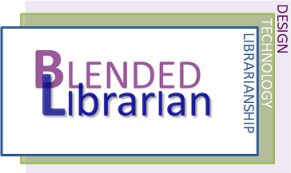On February 17th I gave a plenary talk to attendees at the Independent College Bookstore Association (ICBA). If your institution has an independent college store – and many more of our campus stores are managed by contracted chain stores (e.g., B&N, Follett) – then it’s possible your store manager was there. I focused on three things in the talk:
* What are current trends in academic libraries (college store personnel wanted to hear more about what’s happening in our libraries)
* Why academic librarians have a natural connection with OER and have emerged as campus leaders (our roots as open access advocates)
* Developing better relationships between the academic library and college store (based on research I presented at Open Ed ’16)
I hope the store personnel learned as much from me as I did from them. Store personnel have a very different existence from our own. Whereas many academic librarians have a disdain for business and hesitate to ever refer to students as customers, store personnel operate a retail store on campus. They are revenue driven. They do not get a fixed budget from the university as does the campus library. Everyone is their customer. That’s why their exhibit hall is full of vendors promoting products designed for retail stores (e.g., inventory systems, cash management systems) and well as innovative approaches to managing the textbook inventory and digital delivery of learning material.
One of the sessions I was able to attend was Casey Green’s report on a faculty survey he conducted for ICBA. He gave a fascinating report on faculty perceptions towards digital learning material (mostly e-textbooks but certainly our library e-books as well, not to mention many OER). I was hoping that this report would be shared more widely and now you can access it from the Campus Computing Project. Take a look at Going Digital: Faculty Perspectives on Digital and OER Course Material.
It will give you some insight into the concerns faculty have about digital learning content and OER. While they acknowledge it can offer affordability for their students, concerns remain about the quality of digital content and its value as instructional material. Another concern faculty have is that their students do not have access to the technology that allows them to make the best use of digital content. The campus bookstore is viewed as faculty’s trusted partner in obtaining and making course content accessible to students (no questions about the library as a resource in identifying OER).
I wonder if some of the faculty perceptions around digital learning materials are related to an ongoing connection faculty have with print resources, and a desire for their students to work with print rather than digital content. Librarians who do reference or instruction work, have no doubt encountered research assignments that require students to use only print resources. That might mean that students are limited to only print books in the collection or must locate print journals.
Whatever the case may be, it certainly creates challenges for the students and librarians. I pondered this restriction to print resources only in an essay “Why Must it be Print?” in InsideHigherEd. If and when you see the “print only” assignments, what do you do? Help the student as best you can? Contact the faculty member about it? Other strategies?
